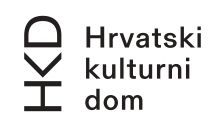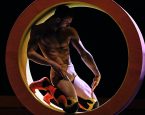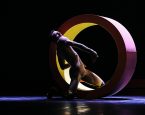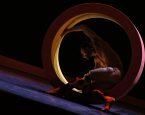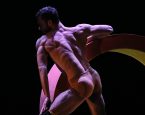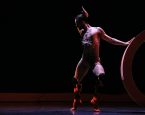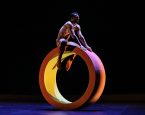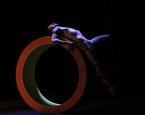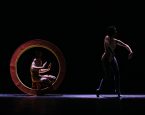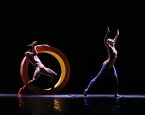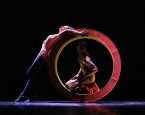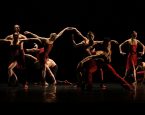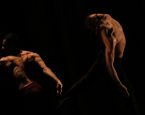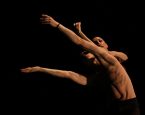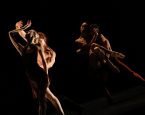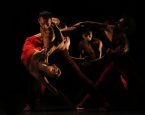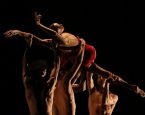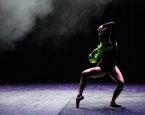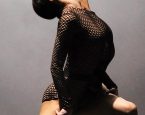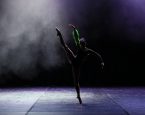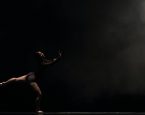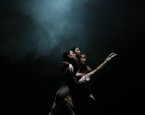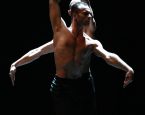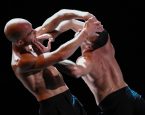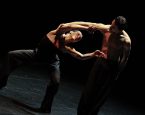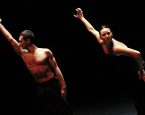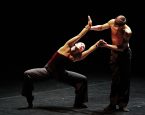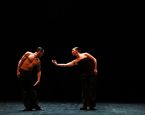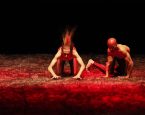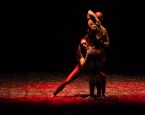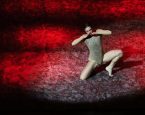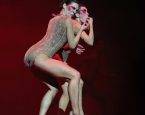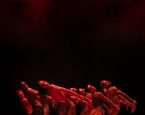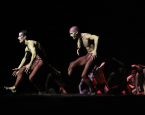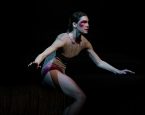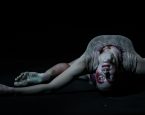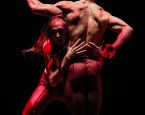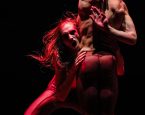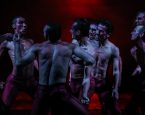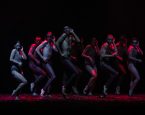
TRANSPARADA
1. dio
POSLIJEPODNE JEDNOG FAUNA / AFTERNOON OF AN FAUN
ŠPANJOLSKA RAPSODIJA / SPANISH RHAPSODY
2. dio
N(U/O)MINOUS
Duet iz ŽAR PTICE / Duet FIRE BIRD
MEDIUM RARE
Special thanks to director Edvin Liverić and the technical staff of the Croatian Cultural Center in Sušak for the space provided and assistance with the rehearsals of the show.
TransParada lasts about one hour and fifteen minutes, it is performed with one break.
The composition Prelude to the Afternoon of a Faun by Claude Debussy is one of the most important musical works of the late 19th century and an eternal inspiration for choreographic creations. The symphonic song was created as a free interpretation of verses written by the symbolist Stéphane Mallarmé. Both interpretations of Mallarmé’s song of the same name were the inspiration for the embodiment of a faun in our 21st century choreographed by Maša Kolar. He is a narcissist, smug and autoerotic, all that we witness every day in today’s world bombarded by digital media. Faun is no longer interested in nymphs, he no longer exercises his passions in relation to someone else, but in relation to himself. If the Faun is a symbol of a man torn by opposite extremes, a man between reality and dream, art and eroticism, soul and matter, then we ask ourselves the question whether human instincts are natural and good or uncivilised and bad?
Finding the right music that inspires me has always been the first step in any of my creations. This time, the challenge was to understand how much Ravel’s Spanish Rhapsody would inspire me.
Since Masa offered me the opportunity to create a ballet to this particular piece of music, my job was to begin to absorb its essence and understand where this music would take me.
Spanish Rhapsody takes me to a very mysterious place where I am seduced by the strong, warm blood of the Mediterranean. These were my first thoughts as I listened to it, beginning to grow and figure.
Like painting, my intention was to choreograph very close to Ravel’s musical intensity giving the audience a moving picture to what they are listening to, bringing into this dialogue between music and dance a dramaturgy of its own.
Inspired immensely by the wonderful dancers of the Croatian National Theatre Ivan pl. Zajc, this work could not have been more pleasurable.
Despite the unpredictability of the future, most people see predictions in a scientific or spiritual way. The future is frightening, so people are trying to make it brighter by the power of the materialisation of thought.
Numinous – causing spiritual, mysterious and/or religious emotions and at the same time Ominous – something bad is about to happen and Omen – a phenomenon that predicts the future.
Wouldn’t it be easier to become an android or a half-human, drowning out your feelings and emotions in order to live longer, not to go crazy, not afraid of what will happen, to always remain unshakable and emotionally stable in order to court your loved ones for longer and protect your own self. What would you choose, emptiness of feelings and long life, or emotions and rapid fading?
For the opening gala of the 2010 Dutch Dance Days, Goecke created a short pas de deux to music from Stravinsky’s ballet The Firebird, which premiered in 1910. What was then entirely in the character of the Russian fairy tale, the fight of the Tsarevich Ivan against the magician Kastschej to free the captive Zarewna and her playmates, Goecke reshapes into the encounter of two shy beings. As music he uses the lullaby with which the mythical firebird lulls the sorcerer and his company to sleep, and adds the triumphant finale. His duet can also be interpreted as a meeting of firebird and prince, two beings of different natures: a bird that dances and a human that flies. At a 2015 gala in Dortmund, Marco Goecke had two men dance it for the first time. In Rijeka version of Goecke Fire bird the audience will be seeing both paring possibilities.
As it goes in, so it goes out. Medium rare is the status I am in today, in the process of recovery and accepting the new reality, between lack and acceptance. The creative process was a tool for me to deal with the waves of longing for my first love and brought me closer to myself. A separation is a connection. Connection is precision.
General sponsor of the Ballet

